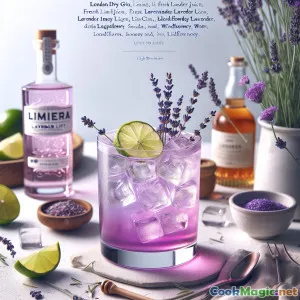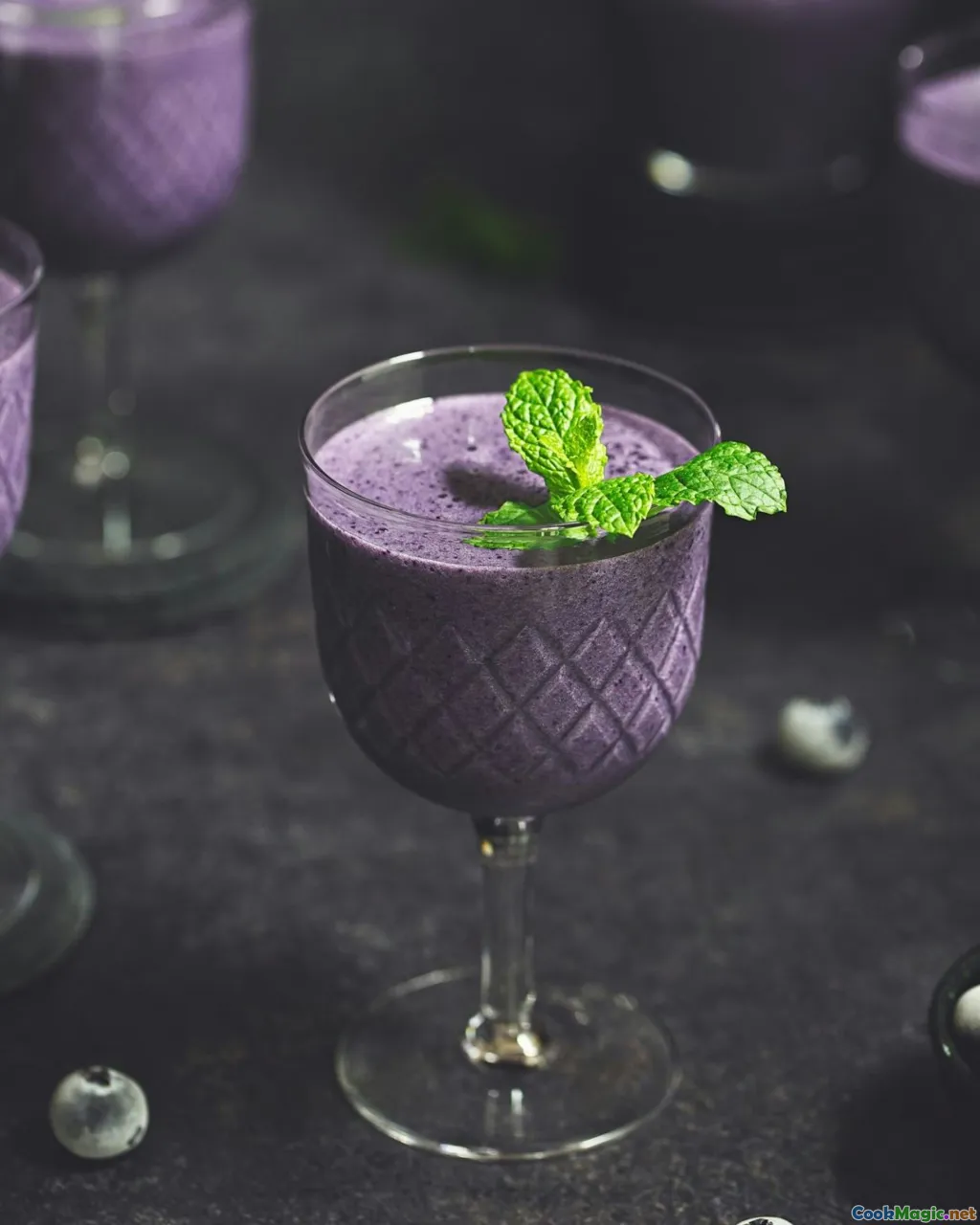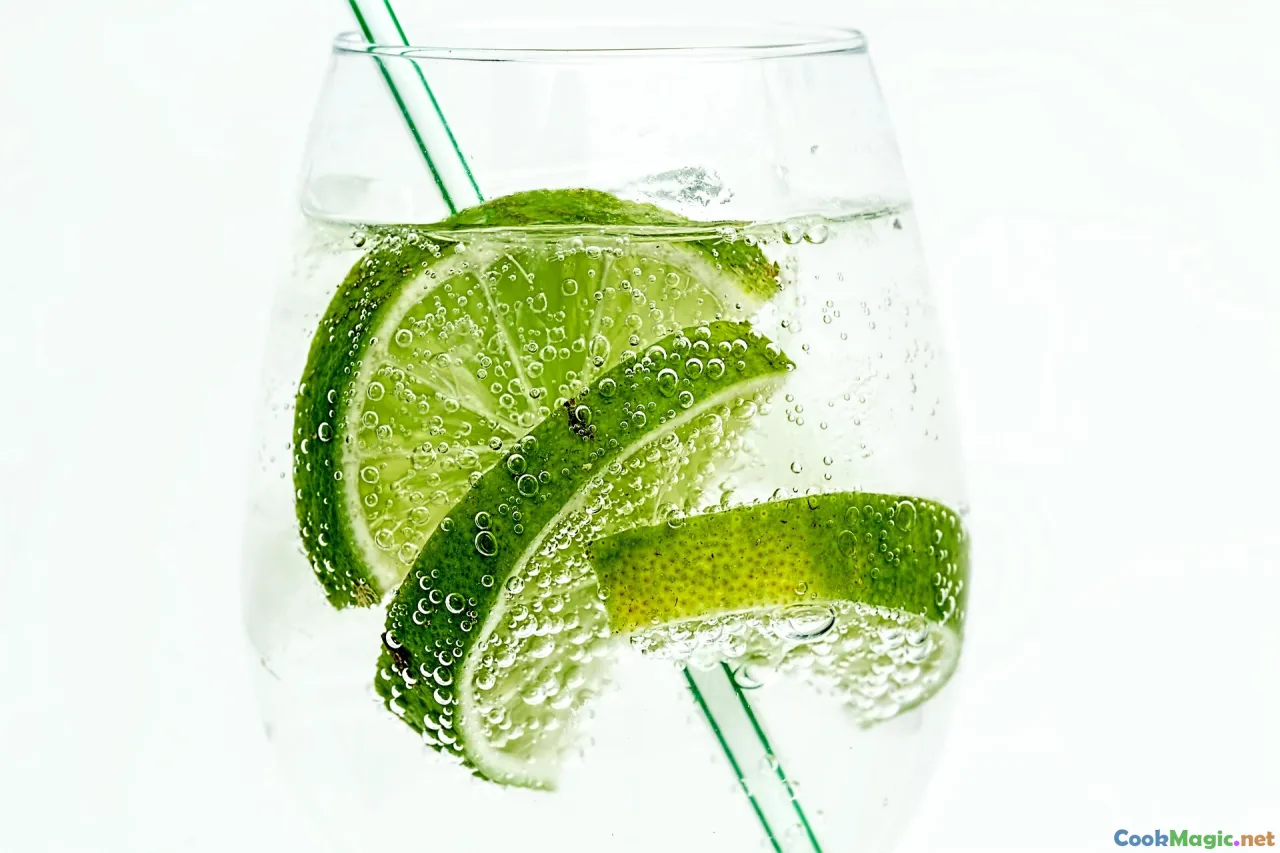
Limeira Lavender Lilt Gin Sour
(0 Reviews)0
303
November 07, 2025
Report a Problem
Ingredients
-
50 ml London Dry Gin
(British London Dry preferred for crisp juniper backbone.)
-
25 ml Fresh Lime Juice
(Squeezed to order for brightest flavor.)
-
20 ml Lavender honey syrup (prepared)
(See Step 1 to make; cool before use.)
-
7.5 ml Elderflower Liqueur
(Soft floral bridge; omit for a drier sour.)
-
30 ml Soda Water
(Optional light spritz to lift the finish.)
-
1 cup Ice Cubes
(Fresh, dense cubes for a hard shake.)
-
1 slice Lime wheel
(Garnish.)
-
1 pinch Dried culinary lavender
(Garnish; use sparingly to avoid bitterness.)
-
100 g Wildflower Honey
(Only if making syrup from scratch; yields ~150 ml.)
-
100 ml Water
(Only if making syrup from scratch.)
-
1 tsp Dried culinary lavender (for syrup)
(Only if making syrup from scratch.)
(British London Dry preferred for crisp juniper backbone.)
(Squeezed to order for brightest flavor.)
(See Step 1 to make; cool before use.)
(Soft floral bridge; omit for a drier sour.)
(Optional light spritz to lift the finish.)
(Fresh, dense cubes for a hard shake.)
(Garnish.)
(Garnish; use sparingly to avoid bitterness.)
(Only if making syrup from scratch; yields ~150 ml.)
(Only if making syrup from scratch.)
(Only if making syrup from scratch.)
Nutrition
- Servings: 1
- Serving Size: 1 coupe (180 ml)
- Calories: 185 kcal
- Carbohydrates: 0 g
- Protein: 0.2 g
- Fat: 0 g
- Fiber: 0.1 g
- Sugar: 14 g
- Sodium: 5 mg
- Cholesterol: 0 mg
- Calcium: 8 mg
- Iron: 0.2 mg
Instructions
-
1 - Make lavender honey syrup:
Combine 100 ml water and 100 g honey in a small pan over low heat. Stir until just dissolved (do not boil). Add 1 tsp dried lavender; remove from heat and steep 5 minutes. Strain through a fine sieve, cool completely, and refrigerate. You’ll use 20 ml for this drink.
-
2 - Chill the Glass:
Place a coupe in the freezer or fill it with ice water to chill while you mix the drink.
-
3 - Build in the shaker:
Add 50 ml gin, 25 ml fresh lime juice, 20 ml cooled lavender honey syrup, and 7.5 ml elderflower liqueur (if using) to a cocktail shaker.
-
4 - Shake hard with ice:
Add ice and shake vigorously for 12–15 seconds until the shaker is frosty and the mixture is well-aerated.
-
5 - Double strain and optionally spritz:
Discard the ice from the chilled coupe. Double strain the cocktail through a fine strainer to catch any ice shards or lavender specks. Top with 30 ml soda water if you prefer a lighter lilt.
-
6 - Garnish and Serve:
Garnish with a lime wheel and a tiny pinch of dried lavender. Serve immediately while bright and aromatic.
Combine 100 ml water and 100 g honey in a small pan over low heat. Stir until just dissolved (do not boil). Add 1 tsp dried lavender; remove from heat and steep 5 minutes. Strain through a fine sieve, cool completely, and refrigerate. You’ll use 20 ml for this drink.
Place a coupe in the freezer or fill it with ice water to chill while you mix the drink.
Add 50 ml gin, 25 ml fresh lime juice, 20 ml cooled lavender honey syrup, and 7.5 ml elderflower liqueur (if using) to a cocktail shaker.
Add ice and shake vigorously for 12–15 seconds until the shaker is frosty and the mixture is well-aerated.
Discard the ice from the chilled coupe. Double strain the cocktail through a fine strainer to catch any ice shards or lavender specks. Top with 30 ml soda water if you prefer a lighter lilt.
Garnish with a lime wheel and a tiny pinch of dried lavender. Serve immediately while bright and aromatic.
More About: Limeira Lavender Lilt Gin Sour
Overview
Limeira Lavender Lilt is a garden-forward British gin sour that balances zingy lime with the soft, poetically floral sweetness of lavender honey. It’s inspired by English herbaceous borders, bee-friendly lavender hedges, and the classic restraint of London Dry gin. The result is a drink that sings: citrus in the lead, flowers in harmony, and a clean, refreshing finish that truly “lilts” across the palate.
Why it works
- Bright acid: Fresh lime defines the structure, keeping the drink lively and food-friendly.
- Floral sweetness: Lavender honey syrup contributes aroma and gentle sweetness without a heavy sugary feel. Honey’s acidity and complex volatiles integrate beautifully with juniper.
- Juniper backbone: A London Dry gin brings crisp botanicals—juniper, coriander seed, citrus peel—that anchor the florals and prevent the drink from turning perfumey.
- Optional elderflower link: A tiny measure of elderflower liqueur ties lime and lavender together, adding lift and length without overshadowing the core flavors.
- Texture and balance: A vigorous shake chills, dilutes, and aerates, giving a satin mouthfeel. A small spritz of soda (optional) emphasizes the drink’s “lilt,” extending the aromatics.
Ingredient notes
- Lavender: Use culinary-grade dried lavender. A little goes a long way; over-extraction can become camphorous or soapy. The syrup method is gentler and more controllable than muddling blossoms directly into the shaker.
- Honey: Wildflower honey complements lavender naturally. If yours is very robust, you can cut it with a milder blossom honey to keep the syrup elegant.
- Gin: Choose a classic London Dry when you want crispness, or a contemporary gin with citrus-forward botanicals for extra brightness. Avoid gins with dominant savory notes that might clash with florals.
- Lime: Always squeeze to order. The oils released as you cut the fruit and the bright acids of just-pressed juice lift the entire drink.
Technique tips
- Syrup precision: Heat only enough to dissolve honey; boiling can drive off delicate aromatics. A 5-minute steep is usually perfect. If you prefer more floral intensity, steep up to 8 minutes, tasting as you go.
- Double strain: This ensures a polished texture and removes any fine lavender dust that may cloud the drink.
- Garnish restraint: A literal pinch of dried lavender is plenty—think of it as a scent cue, not a flavor bomb.
Variations
- Mocktail: Replace gin with 50 ml chilled white tea or seedlip-style botanical spirit. Keep lime and syrup the same; top with soda for sparkle.
- Spritz style: Build over ice in a wine glass, increase soda to 90–120 ml, and skip the elderflower for a drier profile.
- Herbal twist: Swap elderflower for 5 ml dry vermouth to add a subtle, herbaceous snap.
Make-ahead and batching
- Syrup keeps 2–3 weeks refrigerated. Label the date and store in a sealed bottle.
- For a small party, pre-mix a batch of gin, lime, and syrup (no ice, no soda). Chill thoroughly, then shake each portion to order. This keeps citrus tasting fresh while easing service.
Pairings
- Savory: Smoked trout pâté on oatcakes, cucumber sandwiches with lemony crème fraîche, or a goat’s cheese tart.
- Sweet: Lemon-lavender shortbread, Victoria sponge with a thin honey glaze, or poached pears.
Cultural thread
Lavender grows abundantly in the UK and across Europe, treasured for fragrance and calm as much as for culinary delicacy. Pairing lavender with honey nods to Britain’s beekeeping tradition, while gin—particularly London Dry—anchors the drink in classic British cocktail heritage. Lime brings a transatlantic brightness reminiscent of sours that dominated early 20th-century bars. Limeira Lavender Lilt blends these influences into something modern yet rooted in place.
Troubleshooting
- Too floral or bitter? Reduce infusion time or dilute the syrup 1:1 with water. Use a gentler honey.
- Too tart? Increase syrup in 5 ml increments, or add the optional elderflower liqueur.
- Too sweet? Dial syrup back by 5 ml and consider a gin with a stronger juniper spice profile.
Final thoughts
Limeira Lavender Lilt is about finesse. Each element—lime, lavender, honey, gin—has a distinct voice, yet none should dominate. When balanced, the drink feels effortless: a breezy promenade through a summer garden, captured in a coupe.
























